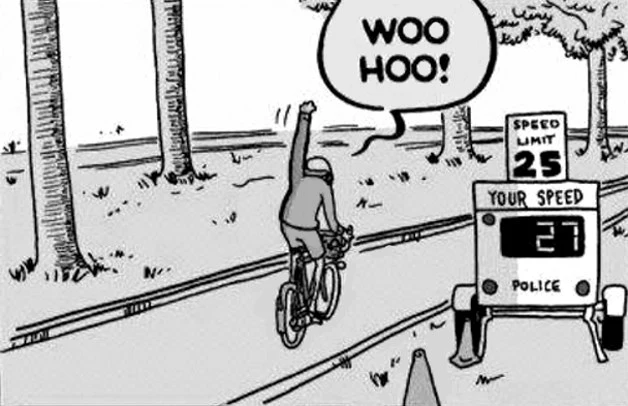 It’s the dream of all cyclists. Cycle faster with no training and no damage to the bank account. Sign me up, right? But is it possible? Very much so. You’ll be amazed how simple changes will make you ride faster.
It’s the dream of all cyclists. Cycle faster with no training and no damage to the bank account. Sign me up, right? But is it possible? Very much so. You’ll be amazed how simple changes will make you ride faster.
The marketers may not like to admit that you’ll cycle faster simply by riding on the drops rather than buying an aero bike. Yet this is the reality. The tips below will make you a faster rider without any of that pesky cycling or spending any of your hard-earned dollars. So how do you do it?
Many things will make you a quicker rider. The most effective require hard work and the easiest require a big wallet. Yet there are many gains to be had simply by changing the way you ride, dress, eat, drink and think.
Whether the performance gains suggested below are as big as some research claims, I doubt very much. Yet add all of the below together and you’ll be quicker. I personally guarantee it!
Aerodynamics
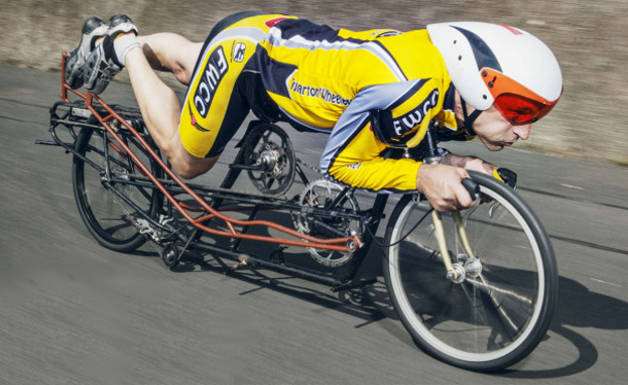
Time to buy an aero bike then right? Whoa there, put that wad of cash back in your pocket. The bike accounts for about 20 percent of this drag, meaning simple things like tucking your elbows in will be more efficient than spending mega-bucks on an aero frame.
Get down low, start off modestly and get your body accustomed to riding in the drops for sustained periods. Learn to relax and drop your shoulders, keep your elbows in and head up.
Cost: Nothing. A bad back maybe.
Extra speed: About 1 minute over ten miles at 25 mph, more if you are slower.
Weight

Carry less water, fewer tools and stop giving your friends backies. All of this will help. Losing weight is even more effective. If your bike is 8 kg and you’re 80 kg it goes without saying your body is the first place to begin trimming.
Weight is particularly important if you want to climb hills quicker. It’s less important (but still important!) on the flat where aerodynamics play a greater role.
Cost: Nothing. Going hungry maybe if you diet rather than eat sensibly.
Extra speed: Many variables here. One researcher suggests a saving of 30 seconds for every 5 lbs (2.3 kg) added to a 160 lb (72.5 kg) rider on a 5 km climb with a 7 percent gradient.
Clothing
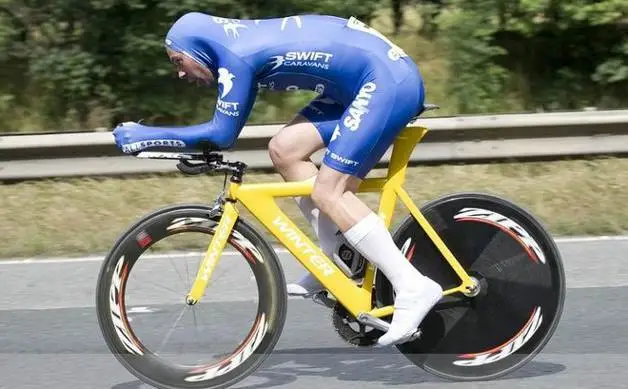
If your body is 80 percent of the aerodynamic drag then your clothes too play an important part in your aerodynamics. Remove anything that flaps or you can hear or feel moving in the wind.
This means tighter fitting Lycra. Some studies even recommend keeping your jersey zipped up to the top. Chest hair ain’t aero. There goes the David Hasselhoff on a bike look.
Cost: Nothing, race fit jerseys cost no more than ‘comfort fit’ or ‘active fit’.
Extra speed: A form-fitting jersey can be worth 91 seconds over 40km
Hydration
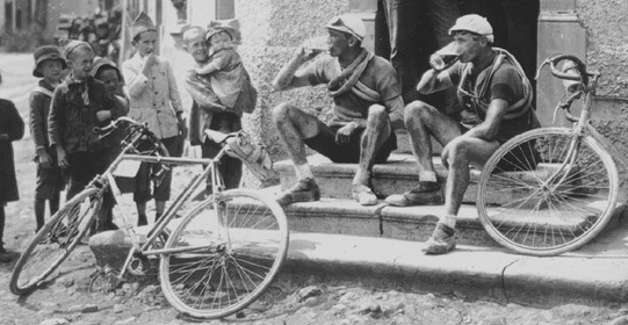
Thirsty? Then you my friend are also likely to be slower. Some research points to a 3 percent jump in the performance of a rider who drinks versus a rider who does not. Other studies suggest a whopping 30 percent.
The method of hydration is still contentious amongst researchers. Some say drink before you’re thirsty, others say drink only when thirsty. Some say replace salts. Others say don’t worry about it. Most agree staying hydrated is important and, perhaps most importantly, making sure you’re hydrated before you climb on the bike.
Personally I go with what works for me. I loathe pseudo sports science, or marketing as it is called. For me electrolyte tablets prevent cramps on long rides. If I’m thirsty then I’m mentally distracted and hence my performance will dip.
Cost: Nothing. Save a few quid on electrolyte tablets by liberating salt packets from McDonalds.
Extra speed: Four minutes over 80km. Maybe. Greatly reduced if your course is short, or hilly and the weight of your water slows you down!
Bike fit

Bike fit. This seems to be all the rage nowadays with people filming you ride and adjusting this and that all in the name of science. This is good because if you’re uncomfortable on the bike you will not be focussed on getting faster. It’s not so great when the cost of a bike fit is about half the price of your bike.
Is a professional bike fit necessary? Of course not. Is a bike that fits you necessary? Yes, absolutely. All aspects are important, handlebar reach and height, seat position, cleat position and, perhaps most important of all, seat height.
If your seat is too low you will not benefit from the maximum power of your legs. Saddle too high and your legs will be stretched, losing power at the bottom of the stroke.
The latter is worse than the former in terms of impact on performance. One study suggests a 12 percent improvement in stamina if you have the correct seat height.
Your saddle height should allow for a 25-35 percent bend in the knee (this is the angle they measure) which produced ‘significantly more power‘ than those outside of this range. I find this bike fit video covers most of the basics and will get you within 5% of the perfect bike fit. The rest is experimentation.
Cost: Nothing. Maybe a pint if you recruit a friend to help.
Extra speed: ‘Significantly more power’ and / or a 12 percent reduction in fatigue.
Time of day
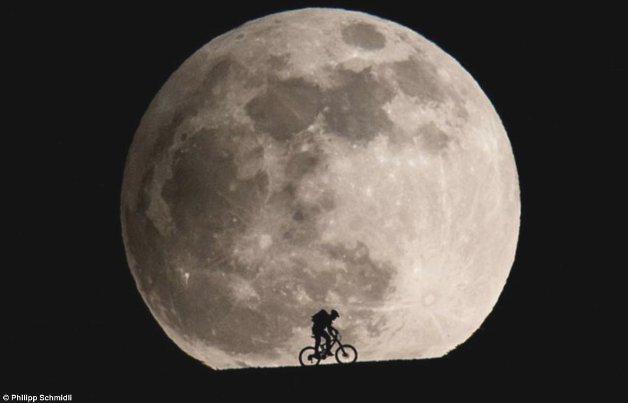 I wrote recently how the time of day can impact on your performance and your natural body clock should be a consideration when looking for the best time to cycle. Essentially riding in the afternoon is best for most of us and could boost your performance by up to 26 percent. You’ll be as quick as Bradley Wiggins before you know it.
I wrote recently how the time of day can impact on your performance and your natural body clock should be a consideration when looking for the best time to cycle. Essentially riding in the afternoon is best for most of us and could boost your performance by up to 26 percent. You’ll be as quick as Bradley Wiggins before you know it.
Cost: Nothing.
Extra speed: A 26 percent increase in performance and a lie in? Sign me up.
Nutrition
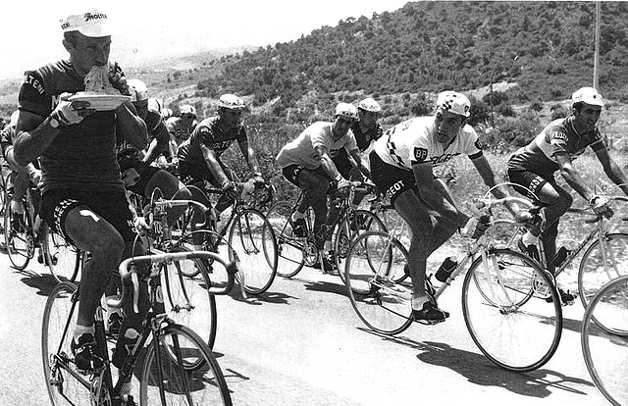
Burgers and beer. Extra fries and mayo dip. This is a tasty diet. It is not however good for riding quickly. In addition to saving weight, eating a good balance of protein and carbohydrates will ensure you are fuelled for your ride.
Forget protein shakes and all that nonsense. Just eat normal food sensibly. Pasta, rice, potatoes. That’s your carbohydrates sorted. Meat, dairy and beans. Protein sorted.
Not only do you need to consider what you eat, but when. This study suggests cyclists who eat or drink carbs an hour before a ride increase their performance by 12.5 percent. You should also make sure you are eating during long rides as well as refuelling post ride when there’s a 30 minute window to stuff your face eat a healthy balance of carbs and protein.
Carb loading the day before a ride can also boost performance by 2-3 percent. Just don’t take it too far and remember to balance carbs in versus carbs out.
Cost: Lidl or Waitrose? You decide.
Performance boost: Between 2-12.5 percent depending on the studies you believe.
Positive mental attitude

Visualising your goals, not quitting on the climb, ignoring the pain when you’re tired. These are just some of the mental tricks to help increase your cycling performance by up to a whopping 20 percent.
Motivation is a big part of your mental make-up. Without motivation you will not improve because you will either ride less or not commit to your training programme.
Confidence plays an important role too. Either executing a strategy in a race or believing in your pacing strategy in a time trial or Strava segment. The moment you begin to doubt yourself is the moment your speed dips and your race is lost.
Cost: Nothing. Unless you need a coach. Or a shrink. Or a hypnotist.
Performance boost: Up to a 20 percent increase in performance.
Caffeine
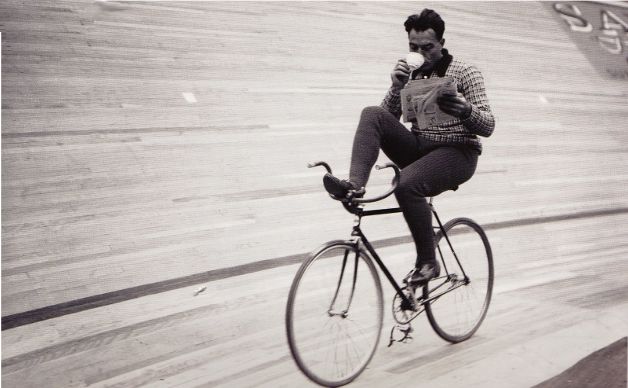
Given amateur riders are now doping, you’d better get snorting Red Bull and injecting Nescafé Gold Blend before a big ride if you want to keep up. Caffeine reduces your perception of pain and thus helps increase your power outputs. Most caffeine research is conducted using high intensity intervals or short time trials and advise that small amounts of caffeine are taken an hour before riding.
Large doses of caffeine can have a negative impact. How much caffeine is enough? One study suggests 0.5 mg per kilo of body weight, so 35 mg for the lightweights and 60 mg for the more portly riders as a guide.
Cost: Nothing, assuming you already drink the black stuff.
Performance boost: 3 percent quicker in a 1 km time trial
Tactics
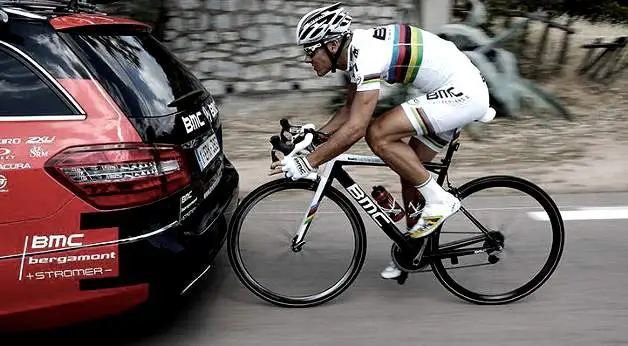
Consider two scenarios on a hilly course. One rider puts out the same power throughout the course. Another rider chooses when to increase their power and when to decrease power depending on both the terrain and the wind. All other things being equal including their average power, which rider is the quickest? The variable rider.
Why? Aero drag increases the faster you are travelling, hence you need extra power to cut through the air. Using the same power with a tailwind, more of that power is spent fighting the drag compared to when you’re in a headwind at slower speeds.
Ride efficiently. Spend energy on the tougher sections of your route, i.e. climbs and when you are facing a headwind. The advantages can be up to a 5 percent improvement in your time.
The same study also suggests you will be ten seconds quicker over 16 km if you do not set off too fast. Easier said than done of course. Pacing is a science in books but an art on the road.
Cost: Nothing.
Performance boost: Ten seconds quicker over 16 km
Cornering
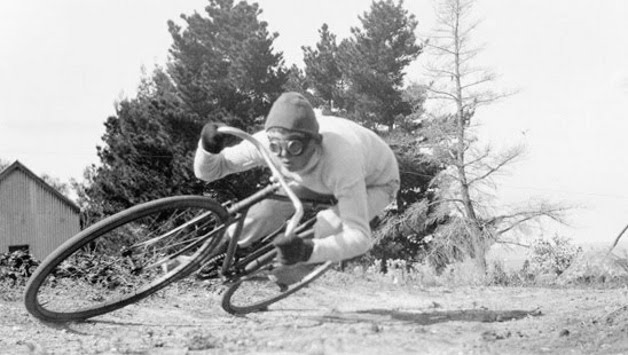
Every time you squeeze your brakes you are wasting energy so it goes without saying that the better you can corner, the more time you will save. Cornering is an art. I’m not advocating you ride like Fabian Cancellera in this mad descent but even by being a little less cautious you could save many seconds for each corner on your route.
How to descend better? Lower your tire pressure a little, get wider tyres, these are two options. Others are all about your position on the bike. Get in the drops so you put more weight on the front wheel. Lean the bike, not the body. Visualise your route through the corner and take the racing line where possible.
If you do need to brake, slow down before not in the corner to maintain momentum. Practise on corners you know well and ride to the conditions. If it’s wet, take it easy. You’ll lose way more time picking yourself up off the deck than you will taking that corner slightly quicker!
Cost: Nothing. Maybe a little road rash if you get over confident.
Performance boost: Many seconds on every corner, especially on descents.
Wow, how fast are you?
So there you go, congratulations you’re a faster rider! Not an interval in sight and your wallet has remained closed tight. Amazing huh? Add up all of those performance boosts and you’ll be ready for the Tour de France, right?
Truth is, many of the above will be marginal gains. Nothing will make you quicker than simply riding your bike more and harder. Yet the above will add up. Sure, there’s many other marginal gains you can spend money on like fancy bikes, aero helmets, skin suits, shoe covers and the like, but none of these will beat the benefits of combining the above.
So if chasing speed and PBs is your thing, test away and see what works for you. Off you go then. And don’t forget to zip up that jersey!
Note to self: close mouth when riding tempo. It ain’t aero.

I remember overhearing a conversation between cyclists just before one of our group rides. He was lamenting that it cost something like $1000 to lighten the bike by a pound. Maybe it was a kilogram…I don’t remember the exact dollar figure or weight figure, other than the fact that it was high and disproportional).
I thought to myself, that if I lost ten kilograms–and I have the excess to lose–I will have saved money on my food budget and gotten faster.
So there.
LikeLike
It’s crazy isn’t it? Plus you could splash that cash on a lovely cycling holiday to enjoy your extra speed. Bonus!
LikeLiked by 1 person
Wow, too much common sense here, by far!
LikeLiked by 1 person
Nescafe Gold Blend – showing your age there 🙂
LikeLike
Ha ha. I can just about remember that stuff passing as coffee back when beans were for toast and toast only! PS edit complete!
LikeLike
As you rightly point out at the top of the article air is the biggest problem, both in terms of getting into your lungs and consequently your muscles and the resistance to your forwards movement. The first I leave to the experts, but the second is easy enough to solve although it does require a little technical knowledge and effort.
Firstly look up the weather forecast on your weather app making a special note of wind direction and speed, second using your traintime app look up train times to a station upwind of your final destination and preferably with a higher altitude.
If you get it right it should be all downhill with a gale behind you and you can eat all the way
LikeLiked by 1 person
I’ve often thought of this, but never put it into action.
LikeLike
Some might say all this riding faster ruins a good ride!
LikeLiked by 1 person
Ha ha, love it. I almost included ‘ride with a tailwind’ that’s certainly one way to cheat the speedo! Nothing quite beats that floating feeling when riding with a tailwind.
LikeLike
Good read!
LikeLiked by 1 person
fantastic!
LikeLiked by 1 person